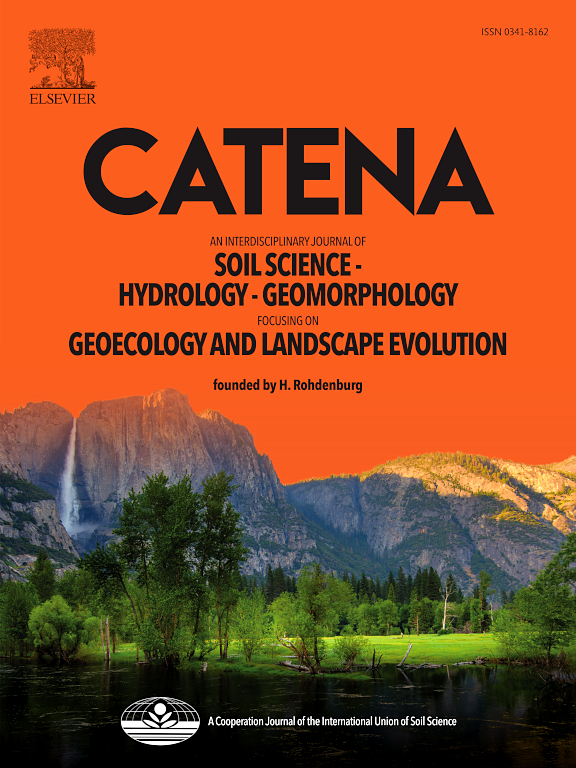姿态对亚高山地区岩壁上附生苔藓分布的连锁效应
IF 5.4
1区 农林科学
Q1 GEOSCIENCES, MULTIDISCIPLINARY
引用次数: 0
摘要
本文章由计算机程序翻译,如有差异,请以英文原文为准。

Chain effect of attitude on epilithic moss distribution on rock faces in a subalpine region
Extensive exposure of rocks and slopes to natural disasters and human activities has resulted in significant ecological degradation, necessitating the quick and reasonable restoration of the ecological environment in areas affected by rock slopes. Mosses, especially epilithic mosses, have great potential for use in ecological restoration projects in mountainous areas because of their strong endurance and adaptability. The microenvironmental conditions of the rock surface, such as light, moisture, and temperature can affect moss growth and distribution. Individual rocks exhibit diverse surface attitudes that presumably induce variations in microenvironmental conditions, leading to significant variations in the distribution and growth of mosses across different rock faces. In this study, the effects of rock face attitude and microenvironment on the growth and expansion of subalpine epilithic mosses on rock faces were studied at the Jiuzhaigou World Natural Heritage Site in China. The results showed that in a humidity range restrained by natural precipitation, the higher the humidity, the better was the moss growth. The optimum humidity range for epilithic moss was 20 % to 60 %, whereas 20–60 µmol·m−2·s−1 was the optimal light intensity. When the temperature exceeded 14 °C in the rainy season, mossy growth was better. The inclination of the rock face had a pronounced influence on the water, light, and thermal regimes of the rock surface. Regarding the rock-epilithic moss system in the subalpine area, a chain effect could be identified that the rock surface attitude affects the microenvironment, and the microenvironment further affects the moss growth. The key factors of the three links were inclination of the rock face, humidity, and moss biomass, respectively. As the rock face slopes downward, the microenvironment gradually becomes less conducive to plant growth owing to deteriorating environmental conditions characterised by reduced light intensity, humidity, and temperature.
求助全文
通过发布文献求助,成功后即可免费获取论文全文。
去求助
来源期刊

Catena
环境科学-地球科学综合
CiteScore
10.50
自引率
9.70%
发文量
816
审稿时长
54 days
期刊介绍:
Catena publishes papers describing original field and laboratory investigations and reviews on geoecology and landscape evolution with emphasis on interdisciplinary aspects of soil science, hydrology and geomorphology. It aims to disseminate new knowledge and foster better understanding of the physical environment, of evolutionary sequences that have resulted in past and current landscapes, and of the natural processes that are likely to determine the fate of our terrestrial environment.
Papers within any one of the above topics are welcome provided they are of sufficiently wide interest and relevance.
 求助内容:
求助内容: 应助结果提醒方式:
应助结果提醒方式:


